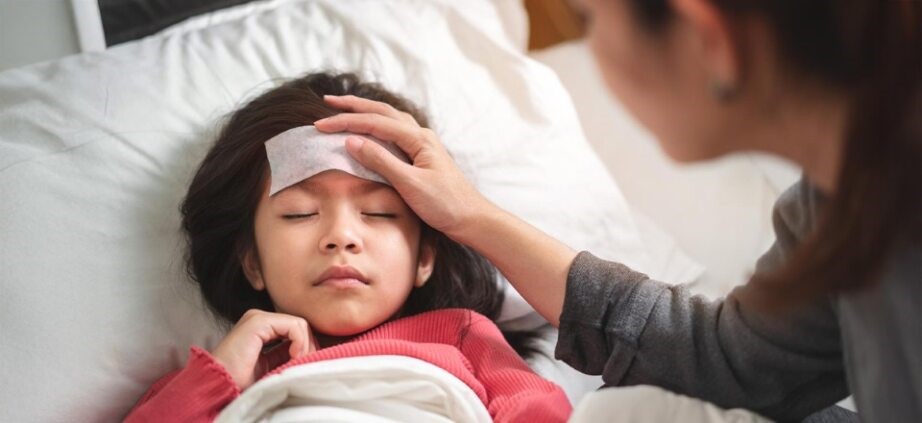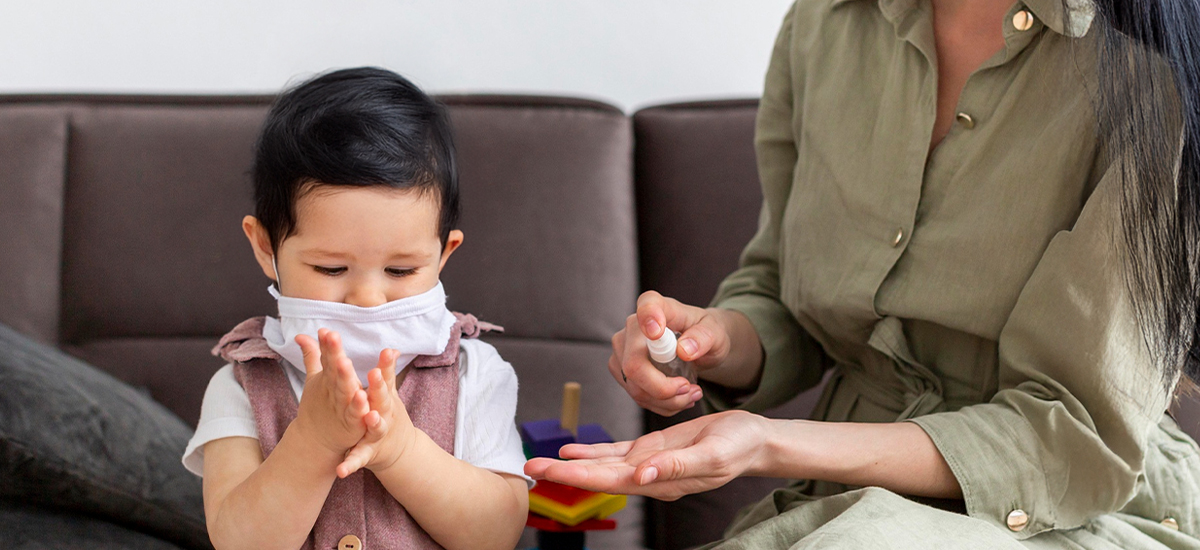Categories
Monsoon Diseases in Children: Prevention & Care
Aug 20, 2025
“Monsoon Diseases” isn’t a fancy label; it’s a cluster of infections that surge with rain: mosquito-borne illnesses like dengue and malaria, waterborne infections like typhoid and cholera, plus leptospirosis and seasonal viral fevers that love puddles, crowds, and damp corners.
Children are easy targets because exposure rises while immunity is still training for the big leagues.
And if the search for a reliable “paediatric hospital near me” is still open, Rainbow Children’s Hospitals brings paediatric expertise, emergency readiness, and season-aware protocols under one roof, designed for children, and battle-tested for monsoon. Prevention first, precision care when needed.
That’s how the season stays about rain, not repercussions.
Disclaimer: This blog aims to provide general information and should not be considered a substitute for professional medical advice, diagnosis, or treatment. Always consult a qualified healthcare provider about your health. If you think you may be experiencing a medical emergency, seek immediate help.
Children are easy targets because exposure rises while immunity is still training for the big leagues.
- Dengue and malaria spike when Aedes and Anopheles mosquitoes breed in stagnant water post-rain; humidity boosts their survival and bite frequency.
- Typhoid, cholera, acute diarrheal disease, and hepatitis A/E are classic “unsafe water + unsafe food” outcomes during the monsoon.
- Leptospirosis rides in via floodwater contaminated with animal urine, wading or playing in puddles with skin cuts is a direct invitation.
Early Signs Parents Shouldn’t Shrug Off
The difference between a quick recovery and a week of regret is noticing patterns early and acting.- Dengue: sudden high fever, severe aches, headache, retro-orbital pain, rash, nausea; any bleeding signs are red flags, seek care immediately.
- Waterborne illnesses: fever with vomiting/diarrhoea, abdominal pain, prolonged fatigue; dehydration risk in kids escalates quickly.
- Leptospirosis: fever, headache, muscle pain after flood/puddle exposure; don’t wait it out, antibiotics are time-sensitive.
Prevention That Actually Works
Let’s skip the gimmicks and go straight to the habits that consistently cut risk, at home and at school.- Water discipline
- Serve boiled or appropriately filtered drinking water; store covered and clean bottles.
- Avoid ice of unknown origin and raw cut fruits from vendors during this season.
- Food hygiene
- Stick to fresh, home-cooked meals; say no to street food (tempting, yes; wise, no).
- Wash produces thoroughly; keep raw and cooked foods apart; reheat thoroughly.
- Mosquito control (daily, not “weekend project”)
- Eliminate stagnant water: trays, pots, buckets, tyres, coolers, empty, scrub, cover.
- Use repellents with DEET/picaridin on exposed skin; install door/window screens; and wear full-sleeve clothing.
- Flood and puddle safety
- No wading or play in puddles/floodwater; cover cuts; waterproof shoes and clothing; wash up immediately after exposure.
- If flooding disrupts supply, boil or chemically treat water before use.
- Personal and home hygiene
- Handwashing before meals and after play; disinfect high-touch surfaces and toys routinely.
- Keep feet dry; change out of wet clothes fast to prevent fungal problems.
- Crowding and ventilation
- Avoid poorly ventilated, crowded indoor spaces during surges; respiratory infections spread faster when the air doesn’t move.
- Vaccinations (the sensible hedge)
- Ensure routine schedule is current; consider influenza and typhoid vaccines per paediatrician advice in the monsoon context.
Home Care vs Hospital: Draw the Line Early
Yes, ORS and rest help, but only until they don’t. Don’t let “let’s watch another day” turn into “we should’ve gone yesterday.”- Manage at home if: fever is low, child is active, taking fluids, no alarming symptoms; keep hydration aggressive and monitor closely.
- Seek a paediatric evaluation fast if: high fever, severe aches, persistent vomiting/diarrhoea, reduced urine, bleeding signs, lethargy, breathing difficulty, jaundice, or any symptom after floodwater exposure.
Myth-Busting
- “Dengue needs dirty water.” Wrong. Aedes breeds in clean, stagnant water just as happily. Households are often the hotspot.
- “Boiled water is overkill.” Not during monsoon; it’s the simplest way to block waterborne disease chains.
- “One coil in the evening is enough.” Not if the water trays and coolers are breeding all day. Source control beats smoke every time.
Your “Pediatric hospital near me” Checklist
When searching “pediatric hospital near me,” look for three non-negotiables during monsoon: rapid diagnostics (CBC, platelets, malaria, dengue tests), paediatric emergency available 24/7, and infection control that’s visible and enforced. Bonus points for parent education, vaccination support, and clear triage protocols. This shaves hours off decision-making when minutes matter.
Conclusion
Monsoon Diseases are not an annual surprise party; they’re a recurring exam with predictable questions. Tidy the water story, tighten the food and hand hygiene, armour against mosquitoes, and teach kids the “no puddle play” rule like it’s sacred. When symptoms surface, escalate early.And if the search for a reliable “paediatric hospital near me” is still open, Rainbow Children’s Hospitals brings paediatric expertise, emergency readiness, and season-aware protocols under one roof, designed for children, and battle-tested for monsoon. Prevention first, precision care when needed.
That’s how the season stays about rain, not repercussions.
Disclaimer: This blog aims to provide general information and should not be considered a substitute for professional medical advice, diagnosis, or treatment. Always consult a qualified healthcare provider about your health. If you think you may be experiencing a medical emergency, seek immediate help.
FAQs
1) My child has sudden high fever and body aches during monsoon. Could this be dengue or malaria, and what should I do tonight?
You cannot tell at home. See a pediatrician today. Ask about CBC, platelets, dengue and malaria tests. Give fluids. Do not give aspirin.
2) My child played in puddles or floodwater and now has fever with muscle pain. Could this be leptospirosis?
Yes, possible. See a doctor the same day and mention the water exposure. Antibiotics are time sensitive for this.3) What should go in a simple monsoon kit for my child’s school bag?
Personal water bottle, small child-safe repellent, raincoat or compact umbrella, spare socks, packet tissues, alcohol hand rub, and one ORS sachet. Label everything.4) Is it true that dengue mosquitoes breed only in dirty water?
No. Aedes mosquitoes breed in clean, stagnant water. Buckets, plant trays, and coolers at home are common sources.











